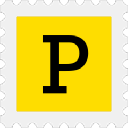How We Developed A $40K/Month Email Parser Application
Hello! Who are you and what business did you start?
Hi there! My name is Sylvestre Dupont and I’m the co-founder of Parseur, a data extraction tool. My official title is CEO, while my co-founder Sylvain is the CTO. We're only a 3-person company, so those titles might be a little over the top though. I’m currently based in the lovely island of Mauritius, in the Indian Ocean, and Sylvain is located in Grenoble, the capital of the French Alps.
Parseur is a subscription-based service (aka SaaS) to automate data extraction from emails and documents such as PDFs. Parseur has been in business for about four years now.
Our customers come from many industries but all have one thing in common: they receive too many emails and documents with the vital information they need for their day-to-day business. They can’t keep up by copying & pasting the text manually and turn to Parseur to automate their data entry process. Having data entry automated, businesses can improve their speed and reliability, reduce their costs and focus their efforts on higher value-added tasks.
Maybe that last bit sounds too meta. Let’s take a real-life example.
Some of our...

Download the report and join our email newsletter packed with business ideas and money-making opportunities, backed by real-life case studies.

Download the report and join our email newsletter packed with business ideas and money-making opportunities, backed by real-life case studies.

Download the report and join our email newsletter packed with business ideas and money-making opportunities, backed by real-life case studies.

Download the report and join our email newsletter packed with business ideas and money-making opportunities, backed by real-life case studies.

Download the report and join our email newsletter packed with business ideas and money-making opportunities, backed by real-life case studies.

Download the report and join our email newsletter packed with business ideas and money-making opportunities, backed by real-life case studies.

Download the report and join our email newsletter packed with business ideas and money-making opportunities, backed by real-life case studies.

Download the report and join our email newsletter packed with business ideas and money-making opportunities, backed by real-life case studies.





































